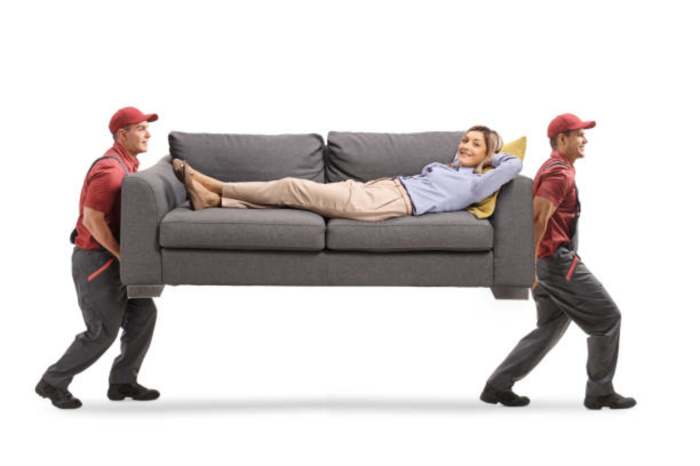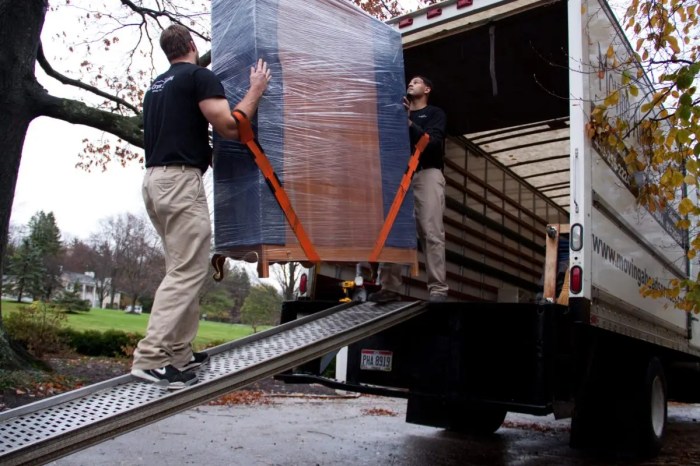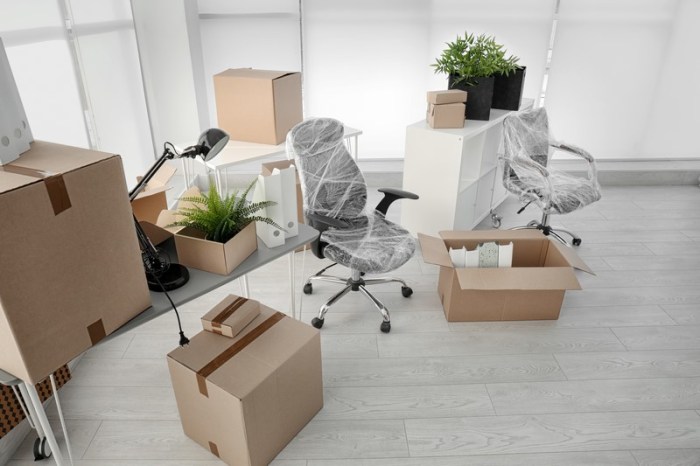Furniture moves, a pivotal aspect of relocation, present a unique set of challenges and opportunities. Understanding the intricacies of this process is crucial for ensuring a seamless and successful transition.
From planning and packing to loading and unloading, each step of a furniture move requires careful consideration. By delving into the nuances of the furniture moving landscape, individuals and businesses can navigate this transition with ease and efficiency.
Furniture Moving Market Overview

The global furniture moving market is a thriving industry that has experienced significant growth in recent years. This growth can be attributed to several factors, including the increasing demand for professional moving services, the rise of e-commerce, and the growing number of people relocating for work or personal reasons.
The market is highly fragmented, with a large number of small and medium-sized businesses operating alongside a few large national and international players. Some of the key players in the industry include United Van Lines, Mayflower Transit, and Atlas Van Lines.
Key Trends
One of the key trends shaping the furniture moving industry is the increasing use of technology. This is being driven by the growing adoption of online booking platforms and the use of GPS tracking to monitor the progress of moves.
In addition, the industry is also seeing a growing demand for green moving services, as consumers become more environmentally conscious.
Types of Furniture Moves

Furniture moves vary in scope and complexity, requiring specialized approaches to ensure a seamless and efficient relocation. Here’s a detailed breakdown of the different types of furniture moves:
Residential Moves
- Involve the relocation of household furniture and belongings from one residence to another.
- Can range from small apartments to large family homes.
- Require careful planning and coordination to minimize disruption to daily life.
Commercial Moves
- Relocate furniture and equipment from one business location to another.
- Involve specialized handling of office furniture, IT equipment, and other commercial assets.
li>Require a high level of organization and coordination to minimize business downtime.
Local Moves
- Moves within a limited geographical area, typically within the same city or region.
- Involve shorter distances and less complex logistics.
- Often require less planning and preparation compared to long-distance moves.
Long-Distance Moves
- Involve the relocation of furniture and belongings across long distances, often crossing state or international borders.
- Require extensive planning, coordination, and specialized handling to ensure safe and efficient transit.
- May involve multiple modes of transportation, such as trucks, trains, or ships.
Specialized Moves
- Involve the relocation of unique or valuable items, such as antiques, artwork, or pianos.
- Require specialized expertise, equipment, and handling techniques to ensure the safety and preservation of the items being moved.
- May involve additional insurance and security measures to protect the value of the items.
Furniture Moving Process
Moving furniture is a significant undertaking that requires meticulous planning and execution. This comprehensive guide Artikels the essential steps involved in the furniture moving process, ensuring a smooth and stress-free experience.
The furniture moving process encompasses six key stages: planning, packing, loading, transportation, unloading, and unpacking. Each stage demands careful attention to detail and coordination to guarantee the safe and efficient relocation of your belongings.
Planning
Thorough planning lays the foundation for a successful move. Begin by creating an inventory of all items to be moved, including furniture, appliances, and decor. This inventory will serve as a roadmap for packing and loading.
Next, determine the scope of the move. Are you moving within the same city or across state lines? The distance and complexity of the move will influence the choice of moving company and the necessary logistics.
Packing
Proper packing is crucial for protecting your furniture during transit. Use sturdy boxes and packing materials specifically designed for furniture. Wrap each piece individually in bubble wrap or packing paper to prevent scratches and damage.
For fragile items, such as glassware and electronics, consider using specialized packing boxes with extra cushioning. Clearly label all boxes with their contents and the room they belong to, ensuring efficient unpacking at your destination.
Loading
Loading furniture onto the moving truck requires careful planning and physical effort. Arrange heavier items towards the bottom of the truck, securing them with straps or ropes. Lighter items and boxes can be placed on top, ensuring they are protected from shifting during transportation.
Use furniture pads or blankets to protect the exterior of your furniture from scratches or dents during loading and unloading. Ensure that all items are securely fastened to prevent damage during transit.
Transportation
During transportation, the moving truck should be driven carefully to minimize sudden stops or jolts that could damage your furniture. Monitor the truck’s progress regularly, especially if you are moving long distances.
If you are moving valuable or fragile items, consider hiring a specialized moving company that provides climate-controlled transportation to protect your belongings from extreme temperatures and humidity.
Unloading
Unloading the furniture at your destination is the reverse of the loading process. Carefully unload each item and place it in the designated room. Inspect each piece for any damage that may have occurred during transportation.
Unpack boxes promptly to avoid clutter and damage. Dispose of packing materials responsibly to maintain a clean and organized environment.
Cost of Furniture Moves
Moving furniture can be a significant expense, but the cost can vary depending on several factors. Understanding these factors can help you plan and budget for your move.
Factors Affecting Cost
- Distance:Longer moves generally cost more due to increased fuel consumption and labor time.
- Volume of furniture:The amount of furniture you need to move will impact the size of the truck required and the number of movers needed.
- Type of move:Local moves within the same city are typically less expensive than long-distance moves.
- Time of year:Moving during peak season (summer and early fall) can result in higher costs.
- Special services:Additional services such as packing, unpacking, or furniture disassembly/assembly may incur extra charges.
Cost Estimates
The cost of furniture moves can vary widely, but here are some general estimates:
- Local moves:$500-$1,500
- Long-distance moves:$2,000-$5,000
These estimates are based on the assumption of a two-bedroom apartment or house with a moderate amount of furniture. The actual cost may vary depending on the specific factors mentioned above.It is important to obtain quotes from multiple moving companies to compare prices and services before making a decision.
Furniture Moving Companies
When selecting a furniture moving company, it is crucial to consider their services, pricing, and reputation. Top companies offer a range of services, including packing, loading, transportation, and unpacking. They also provide specialized services such as piano moving and antique handling.
Pricing varies depending on the size of the move, distance, and services required. It is advisable to obtain quotes from multiple companies to compare costs. Additionally, checking online reviews and customer testimonials can provide insights into the company’s reputation and reliability.
Top Furniture Moving Companies
- Allied Van Lines:Renowned for its comprehensive services, including packing, storage, and vehicle transportation. Known for its high-quality service and customer satisfaction.
- United Van Lines:One of the largest moving companies, offering a wide range of services, including international moves. Provides flexible scheduling and competitive pricing.
- Mayflower Transit:Specializes in long-distance moves and offers customized moving plans. Known for its experienced crews and attention to detail.
- Atlas Van Lines:A well-established company with a vast network of agents. Provides a full range of moving services, including packing, loading, and transportation.
- Bekins Van Lines:Known for its expertise in handling high-value and delicate items. Offers specialized services such as climate-controlled storage and art handling.
DIY Furniture Moves
DIY furniture moves involve individuals moving their own furniture without hiring professional movers. While this approach can save money, it’s crucial to weigh the advantages and disadvantages carefully.
Advantages of DIY Furniture Moves
* Cost savings:Hiring professional movers can be expensive, especially for long-distance moves. DIY moves eliminate these costs, potentially saving a significant amount of money.
Flexibility
DIY moves allow for greater flexibility in scheduling and timing. Individuals can move at their own pace and convenience, without having to coordinate with movers.
Personal control
DIY moves provide individuals with complete control over the handling and transportation of their belongings. This can minimize the risk of damage or loss.
Disadvantages of DIY Furniture Moves
* Physical exertion:Moving furniture can be physically demanding, especially for heavy or bulky items. Individuals may experience strain or injury if proper precautions are not taken.
Time-consuming
Furniture moves can be a hassle, but it’s essential to keep your furniture in good condition. If you’re looking for durable and functional furniture for your fire station, consider fire station furniture . This type of furniture is designed to withstand the rigors of everyday use and can help keep your firefighters safe and comfortable.
Furniture moves are made easier with the right furniture.
DIY moves can be time-consuming, particularly for large or complex moves. Individuals may need to take time off work or arrange for assistance to complete the move efficiently.
Risk of damage
Without proper experience and equipment, individuals may increase the risk of damaging their furniture or property during the move.
Tips for DIY Furniture Moves
For those considering a DIY furniture move, the following tips can help ensure a successful and safe experience:* Plan ahead:Start planning well in advance, allowing ample time to prepare and gather necessary resources.
Get help
Don’t attempt to move heavy furniture alone. Enlist the help of friends, family members, or neighbors to assist with lifting and carrying.
Protect your furniture
Use blankets, padding, and shrink wrap to protect your furniture from scratches, dents, and damage during transit.
Furniture moves can be a daunting task, but it doesn’t have to be. With the right team of professionals, you can rest assured that your belongings will be handled with care. One such team is Flanigan Furniture , a reputable company known for its expertise in furniture moves.
Their experienced movers will ensure that your furniture is safely packed, transported, and reassembled in your new home.
Rent a moving truck or trailer
If you don’t have a large enough vehicle to transport your furniture, rent a moving truck or trailer that can accommodate the size and weight of your belongings.
Secure your load
Use straps, ropes, or bungee cords to secure your furniture in the moving vehicle to prevent it from shifting or falling during transport.
Drive carefully
When driving with a loaded moving vehicle, be cautious and avoid sudden stops or turns that could cause the furniture to move or tip over.
Unload safely
Have a plan for unloading your furniture at your new location. Use dollies or hand trucks to move heavy items, and be mindful of potential hazards such as stairs or narrow doorways.
Furniture Moving Safety

Moving furniture requires careful planning and execution to ensure both the safety of the furniture and the individuals involved. Neglecting safety measures can lead to injuries, damage to furniture, and other unforeseen consequences.
Moving furniture can be a hassle, especially if you’re moving long distances. That’s where furniture shipping companies come in. They can take care of the packing, shipping, and delivery of your furniture, so you can focus on other things. When choosing a furniture shipping company, be sure to compare prices, services, and reviews to find the best fit for your needs.
Furniture moves can be stressful, but with the right furniture shipping company, they don’t have to be.
Adhering to proper safety guidelines is paramount when moving furniture. These guidelines encompass techniques for lifting, carrying, and transporting furniture safely, minimizing the risk of accidents and ensuring a smooth and successful move.
Lifting Furniture Safely
- Assess the weight and size of the furniture before attempting to lift it. If it is too heavy or bulky, seek assistance from others or consider using mechanical aids.
- Bend your knees and keep your back straight when lifting. Avoid bending over at the waist, as this can strain your back.
- Lift with your legs, not your back. Use your thigh muscles to power the lift.
- Get a firm grip on the furniture and keep it close to your body. Avoid overreaching or twisting your body while lifting.
- If the furniture is particularly heavy, consider using a lifting strap or furniture dolly to reduce the strain on your body.
Furniture Moving Technology
Advancements in technology have revolutionized the furniture moving industry, making it more efficient, convenient, and cost-effective. From virtual reality (VR) walkthroughs to AI-powered inventory systems, technology is transforming the way furniture moves are planned, executed, and managed.
VR Walkthroughs
VR walkthroughs allow customers to virtually explore their new space and visualize how their furniture will fit. This technology eliminates the need for multiple site visits and guesswork, ensuring a seamless move.
AI-Powered Inventory Systems
AI-powered inventory systems use computer vision and machine learning algorithms to automatically identify and catalog furniture items. This technology reduces the time spent on manual inventorying, improves accuracy, and ensures that all items are accounted for.
Real-Time Tracking
Real-time tracking systems provide customers with updates on the status of their move. They can track the progress of their furniture from pickup to delivery, providing peace of mind and allowing them to plan accordingly.
Automated Loading and Unloading
Automated loading and unloading systems use robotic arms and conveyors to move furniture efficiently and safely. This technology reduces the risk of damage and injury, and speeds up the moving process.
Furniture Moving Trends
The furniture moving industry is constantly evolving, with new trends emerging all the time. These trends are shaping the future of the industry and making it more convenient and affordable for people to move their furniture.
One of the most significant trends in the furniture moving industry is the rise of online booking. In the past, people had to call or visit a moving company in person to book a move. However, now many moving companies offer online booking, which makes it easier and more convenient to book a move.
Another trend in the furniture moving industry is the increasing use of technology. Moving companies are using technology to improve their efficiency and provide better customer service. For example, some moving companies use GPS tracking to track their trucks and provide real-time updates to customers.
Sustainability
Sustainability is becoming increasingly important to consumers, and this is reflected in the furniture moving industry. Many moving companies are now offering eco-friendly moving services, such as using recycled materials and fuel-efficient vehicles.
Customization
Consumers are also demanding more customization from their moving companies. They want to be able to choose the services that they need and the price that they are willing to pay. Many moving companies are now offering a variety of customizable moving packages to meet the needs of their customers.
Conclusion
Furniture moves, while often daunting, can be executed seamlessly with proper planning and execution. By understanding the various types of moves, factors affecting costs, and safety considerations, individuals and businesses can navigate the relocation process with confidence.
Embracing emerging technologies and staying abreast of industry trends further enhances the furniture moving experience, ensuring a smooth and stress-free transition.
FAQ Compilation
What are the key considerations when planning a furniture move?
Planning a furniture move involves assessing the type of move, determining the volume of items, creating a timeline, and securing necessary resources such as packing materials and transportation.
How can I minimize the cost of a furniture move?
Cost-effective furniture moves can be achieved by opting for off-season moves, comparing quotes from multiple moving companies, packing items самостоятельно, and utilizing free or low-cost packing materials.
What safety precautions should be taken when moving furniture?
Furniture moves require proper lifting techniques, use of protective gear, securing furniture during transportation, and ensuring a clear path for搬运工.